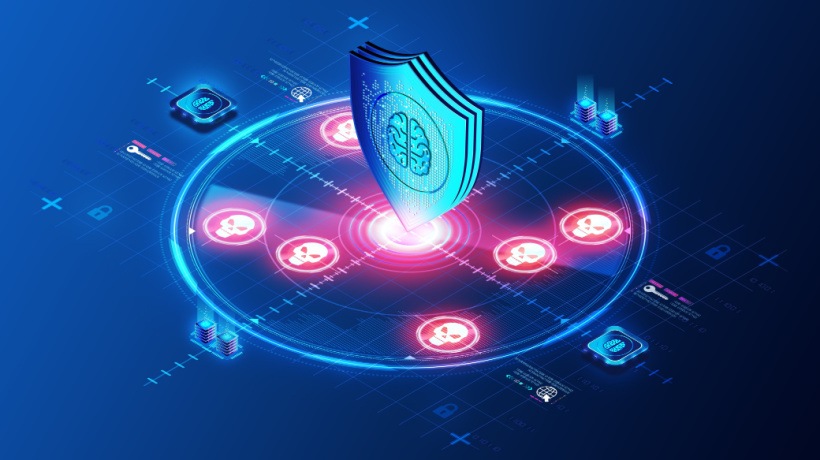Why AI-Powered Cybersecurity Training Is The Next Frontier
In today's digital-first world, cybersecurity threats have become more sophisticated, frequent, and damaging. As corporations increase their reliance on digital infrastructure, they face rising cyberattacks—from phishing scams to advanced persistent threats (APTs). According to Cybersecurity Ventures, global cybercrime costs are expected to reach $10.5 trillion annually by 2025. These alarming numbers underscore a critical corporate need: equipping employees with cutting-edge cybersecurity awareness and skills. One of the most innovative and necessary approaches today is Artificial Intelligence (AI) cybersecurity training.
For Learning and Development (L&D) professionals, staying ahead of evolving threats means moving beyond traditional training models. AI-powered cybersecurity training offers the opportunity to deliver personalized, adaptive, and real-time learning experiences that respond dynamically to new threats and learner behaviors.
What Is AI Cybersecurity Training?
AI cybersecurity training refers to the application of Artificial Intelligence technologies to design, deliver, and enhance cybersecurity education programs. It typically involves using Machine Learning algorithms, Natural Language Processing, predictive analytics, and intelligent automation to tailor content, simulate threats, and evaluate employee responses to cybersecurity challenges. Instead of generic, one-size-fits-all learning modules, AI cybersecurity training allows for:
- Personalized learning paths
Based on user performance - Real-time threat simulation and scenario-based training
- Behavioral analytics
Predicts high-risk user actions - Automated assessments
Tracks competency growth
This shift from passive to interactive and data-driven learning can significantly increase the effectiveness of cybersecurity awareness programs in the workplace.
Why AI-Powered Cybersecurity Training Matters For Corporate L&D
1. The Human Factor In Cybersecurity Breaches
Human error remains the leading cause of data breaches. According to the World Economic Forum, 95% of cybersecurity issues trace back to human mistakes. Clicking on malicious links, reusing passwords, or mishandling sensitive data can lead to catastrophic breaches.
AI cybersecurity training helps by identifying employees with poor cyber hygiene and tailoring training interventions that address specific gaps. For instance, if a user often falls for phishing attempts during simulations, AI can trigger more focused phishing-awareness modules for that user.
2. Real-Time Adaptation To Evolving Threats
Traditional cybersecurity training programs struggle to keep up with the pace of cybercrime evolution. Threats evolve daily, if not hourly. AI cybersecurity training platforms use Machine Learning algorithms to analyze trends from threat intelligence databases and adapt training scenarios accordingly. This dynamic approach means employees are not only trained on historical attacks but are also prepared for emerging threats—enhancing organizational resilience.
3. Data-Driven Decision Making For L&D Leaders
For L&D professionals, demonstrating ROI is a critical part of the training function. AI cybersecurity training platforms offer advanced analytics and dashboards that give insights into learner progress, engagement levels, and areas of improvement. Metrics such as:
- Reduction in phishing test failure rates.
- Time taken to identify simulated threats.
- Completion rates and engagement patterns.
These can help L&D leaders fine-tune training initiatives and report measurable outcomes to executive stakeholders.
Benefits In Corporate Learning Environments
Scalable And Cost-Effective
AI cybersecurity training systems can scale to thousands of users without proportional increases in cost. With cloud-based platforms, training can be delivered across geographies with localized content and language preferences, all managed from a central dashboard.
Continuous Learning Culture
AI systems continuously monitor and engage learners through microlearning nudges, periodic threat simulations, and gamified modules. This reinforces cybersecurity best practices and fosters a culture of vigilance.
Simulation-Based Training
Using AI, organizations can conduct hyperrealistic cyberattack simulations. These simulations test employees' responses to situations such as ransomware, credential theft, or insider threats—providing both practice and feedback in a safe environment. According to a 2023 IBM security report, organizations that ran continuous simulation-based cybersecurity training observed 30% fewer security incidents compared to those with only annual training programs.
Key Features To Look For In An AI Cybersecurity Training Platform
L&D professionals evaluating AI cybersecurity training tools should consider platforms that offer the following:
- AI-driven personalization
The system should automatically tailor content based on employee role, risk profile, and performance history. - Threat intelligence integration
Real-time updates from threat databases to ensure training stays current. - Interactive scenarios and gamification
Use of storytelling, games, and real-time simulations to improve engagement. - Behavioral analytics
Track behavioral patterns to identify risky employee behavior before it results in an incident. - Automated reporting and dashboards
Real-time metrics to track training impact and compliance readiness.
Use Case: Fortune 500 Firm Implements AI Cybersecurity Training
A Fortune 500 financial services company rolled out an AI cybersecurity training platform to combat increasing phishing attacks. Within six months:
- Phishing test success rates improved by 45%.
- High-risk employees were identified and received focused training.
- Employee engagement with cybersecurity modules increased by 60%.
The L&D team could use these analytics to demonstrate a clear link between training and improved cybersecurity posture, gaining further buy-in from C-level leadership.
The Future Of Cybersecurity Training Is AI-Powered
As remote work, bring your own device (BYOD) policies, and cloud computing redefine corporate boundaries, cybersecurity risks are now both pervasive and personalized. AI cybersecurity training bridges the gap between outdated learning approaches and the dynamic nature of cyber threats.
According to Gartner, by 2026, 70% of organizations will adopt AI-driven cybersecurity training tools as part of their learning ecosystems. The integration of AI into L&D not only empowers employees to act as the first line of defense but also provides corporate leaders with the data they need to proactively manage cyber risks.
Conclusion: A Strategic Investment For L&D Professionals
In a world where data is the new currency, cybersecurity is no longer the sole responsibility of IT departments. It is an organizational priority—and AI cybersecurity training is the modern L&D solution that meets this need with precision, personalization, and predictive power. By investing in AI-powered platforms, corporate L&D professionals can lead the charge in creating a cyber-aware culture that not only protects assets but also builds employee confidence in managing digital threats. As cyberattacks grow in complexity, the response must grow smarter—and that starts with how we train our people.









